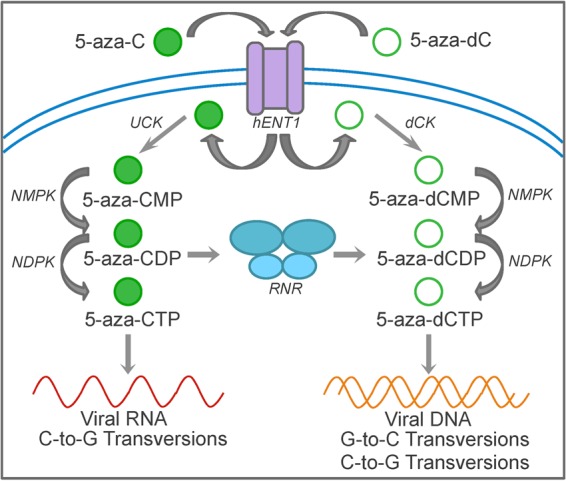FIG 5.

Model of 5-azacytidine- and 5-aza-2′-deoxycytidine-mediated HIV-1 mutagenesis. 5-Aza-C and 5-aza-dC are first transported into the cell by facilitated diffusion through human equilibrative nucleoside transporter 1 (hENT1). 5-Aza-C and 5-aza-dC are then phosphorylated by uridine-cytidine kinase (UCK) and deoxycytidine kinase (dCK), respectively, to the monophosphate forms. Nucleoside monophosphate and diphosphate kinases (NMPK and NDPK) phosphorylate the monophosphate and diphosphate forms, respectively, resulting in the formation of 5-aza-CTP and 5-aza-dCTP. 5-Aza-CTP can be incorporated during the transcription of viral genomic RNA, resulting in C-to-G transversions. 5-Aza-CDP is also reduced to 5-aza-dCDP, ultimately forming 5-aza-dCTP. 5-Aza-dCTP is incorporated during reverse transcription, resulting primarily in G-to-C transversions (reflecting minus-strand incorporation) but also in low levels of C-to-G transversions. The mechanism by which C-to-G transversions are formed is still unclear, but they may be due to plus-strand incorporation of 5-aza-dCTP or minus-strand incorporation of 5-aza-dCTP hydrolysis products.
